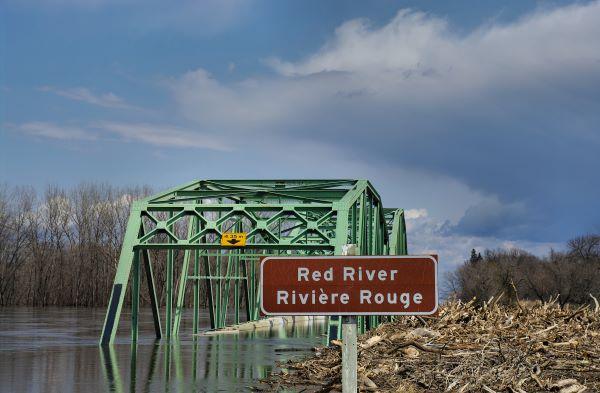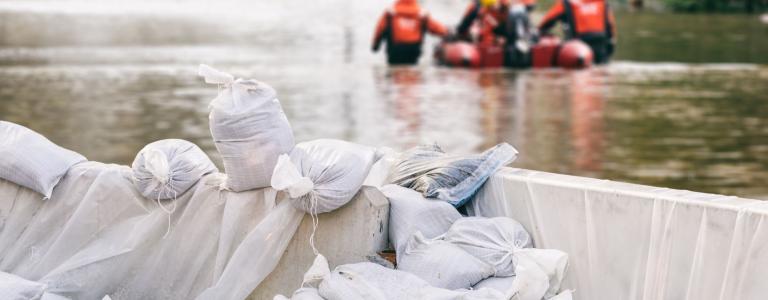Canada Can't Afford to Put Climate Adaptation on the Back Burner
Investing in climate adaptation measures is an opportunity to demonstrate foresight, show leadership, protect our economy, and keep Canadians safe.
You may have heard Justin Trudeau and other leaders use the phrase “build back better” to highlight the importance of not merely enduring the COVID-19 pandemic and its economic and social challenges but acting decisively to come back even stronger.
If Canadians truly want to build back better, there must be greater focus now—urgently—on adapting to a changing climate.
Canada, like the rest of the world, is experiencing more severe weather events and natural disasters linked to climate change. The raging wildfires along the U.S. West Coast are only the latest example. The human and financial costs of climate-influenced events continue to escalate.
Between 1983 and 2008, insured losses from natural catastrophes in Canada averaged about CAD 400 million a year. In the last 10 years, that number has jumped to more than CAD 1 billion a year. This year, we expect to exceed that amount in Alberta alone. Just two major events—flooding in northern Alberta and a hailstorm in Calgary—resulted in close to CAD 2 billion in insured losses, along with personal hardship for those affected.
The message is clear: Canada can be a global leader in adaptation and recovery, but we must invest today to reduce the risks we collectively face due to climate change.
Confronting climate change is a two-pronged fight. We absolutely need to reduce emissions. That’s a long-term imperative. But in the immediate future, we also need to adapt. We must take action to defend ourselves against the initial impacts of our changing climate.
Unfortunately, the slow pace of climate adaptation measures has left Canadians increasingly vulnerable to these more frequent severe weather events. It is also putting financial pressure on families and governments and causing heartache and anxiety for Canadians who live in harm’s way.

One in five Canadian residential properties is at risk of overland flooding, with between 800,000 and 1,000,000 properties at high risk. The risk of wildfire continues to grow. We have entered an era of increased threat to life and property.
No single industry or government can solve this on their own. But if we act now and act together, we can begin to make meaningful progress.
An example is the Task Force for a Resilient Recovery, an independent and diverse group of Canadian finance, policy, and sustainability leaders (including both authors of this blog post) that just released its final report. In it, we recommended five bold yet achievable measures to help Canada build back better, with a focus on investing in the low-carbon economy and bolstering our climate resilience.
Among the recommendations, we called on the Canadian government to put in place a national program that supports efforts to retrofit existing buildings and infrastructure for enhanced climate resilience. This will create good new jobs and position Canada to better endure the growing impacts of our changing climate.
Investing in climate adaptation measures is an opportunity to demonstrate foresight, show leadership, protect our economy, and keep Canadians safe.
To be certain, this isn’t a challenge unique to Canada. The Global Commission on Adaptation, led by former UN Secretary-General Ban Ki-moon, is calling on political leaders around the world to “incorporate climate resilience into [their] economic recovery packages.” In particular, the commission is urging accelerated investments in urban resiliency and disaster prevention.
Here in Canada, the Federation of Canadian Municipalities estimates that CAD 5.3 billion is required annually to help protect our infrastructure from emerging climate risks.
The message is clear: Canada can be a global leader in adaptation and recovery, but we must invest today to reduce the risks we collectively face due to climate change.
Canada’s recent Speech from the Throne had promising signals, with a focus on building retrofits, clean energy, and investments in nature. Canada would benefit from such investments and other achievements in sustainability. But any truly green recovery plan must also recognize and respond to the new reality of climate risk.
Better preparation today—a national flood management plan, for instance—will pay dividends down the road. Smart investments will result in future savings. The longer we delay, the higher the costs and the greater the risk to human life and our natural and human-built areas.
There’s an old saying: Within every crisis is an opportunity. We build back better when we build back smarter, with an eye to confronting the immediate challenges and impacts of climate change, even as we continue working to reduce emissions over the long term.
Investing in climate adaptation measures is an opportunity to demonstrate foresight, show leadership, protect our economy, and keep Canadians safe.
Dr. Richard Florizone is the President and CEO of IISD. Don Forgeron is the President and CEO of the Insurance Bureau of Canada. Both were members of the Task Force for a Resilient Recovery, which just concluded its work.
You might also be interested in
Canada Steps Up on Climate but Needs Private Sector and Provinces to Follow
The government's new 2030 target is ambitious; with a collective effort from provinces and Canadian businesses, it can go even further.
We May Be in Uncharted Waters, But We Aren’t Lost at Sea
When the financial crisis of 2008 hit, governments around the world began structuring stimulus plans. We can learn a lot by looking back at how effective these turned out to be.
Sustainable Development in the Year of COVID-19
The global pandemic has brought challenges the likes of which this generation has never seen. But there have also been bright spots worth celebrating.
Canada Is Stepping Up its Climate Ambition, Now we all have to step up
A new climate plan includes clear commitments to reduce our carbon footprint, build resilience, and play a leading role on the world stage.
